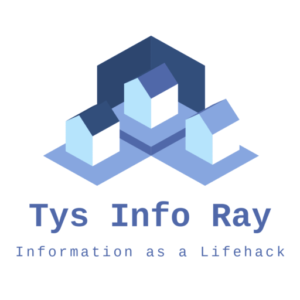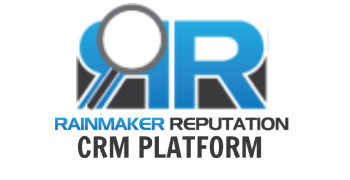A secured loan is a type of financial obligation that is directly linked to an asset, most commonly the borrower’s home or property. For individuals considering a secured personal loan, it is crucial to demonstrate ownership of a property, as this ownership serves as collateral. This collateralization allows borrowers to take advantage of larger loan amounts, making secured loans an appealing choice for those needing substantial financing.
By associating a secured loan with property ownership, lenders establish a safety net that significantly reduces their financial exposure. However, it’s important to recognize that defaulting on a secured homeowner loan can lead to severe consequences, including the risk of losing one’s home. Thus, it is essential for potential borrowers to fully understand the implications and responsibilities that come with secured lending, ensuring they make informed financial decisions.
The amount you can borrow, the interest rates applied to secured loans, and the duration of the loan are influenced by several factors, including your creditworthiness and the equity available in your property. Free equity is calculated by taking the current market value of your home and subtracting any remaining mortgage balance. Understanding your equity is vital, as it plays a significant role in determining your borrowing capacity and overall loan options.
Despite the risks associated with secured loans, they provide numerous advantages. Borrowers often have access to much larger sums compared to unsecured personal loans, which can make a significant difference in financing needs. Additionally, individuals with poor credit histories may find it easier to obtain secured loans than unsecured alternatives. These loans also typically feature longer repayment periods and fixed monthly payments, which can enhance financial planning and stability.
However, the unpredictability of life can lead to changing circumstances that affect your ability to keep up with loan repayments. It is critical to be aware of the potential repercussions if you struggle to maintain payments on a loan secured by your property. Being informed and proactive can help you manage these situations and protect your financial well-being.
A prevalent misunderstanding among borrowers is that a single missed payment will immediately trigger home repossession. This belief is misleading; while one missed payment may not result in drastic action, consistently missed payments can indeed lead to repossession. Lenders must follow a series of legal steps before initiating repossession, ensuring that borrowers are offered a fair opportunity to rectify their financial situation and avoid severe consequences.
 UNDERSTANDING THE CONSUMER CREDIT ACT 1974 AND ITS IMPACT ON SECURED LOANS
UNDERSTANDING THE CONSUMER CREDIT ACT 1974 AND ITS IMPACT ON SECURED LOANS
If you secured your loan after April 2008 and it was not explicitly used for purchasing your home, it is likely regulated by the Consumer Credit Act. This legislation is designed to provide essential protections for borrowers, ensuring that they are treated fairly by lenders, unless the loan agreement states otherwise. Being aware of these protections is crucial for borrowers to navigate the lending landscape confidently.
When the Consumer Credit Act applies to secured personal loans, lenders are required to issue a Default Notice and a Time Order before they can begin repossession proceedings. This requirement affords borrowers additional time to gather resources and address their financial difficulties without the imminent threat of losing their homes, thus acting as a vital safety net during financially challenging periods.
For second mortgages or secured debts that do not fall under the Consumer Credit Act, lenders have a more streamlined process for repossessing your property. Therefore, it is essential for borrowers to ascertain whether their debt is covered by this legislation, as this knowledge can help protect their assets and clarify their rights in the event of financial distress.
If your loan was secured prior to April 2008, it remains protected by the Consumer Credit Act only if the total amount of the loan or second mortgage is less than £25,000. Being aware of these thresholds can significantly influence your approach to debt management and understanding your rights as a borrower, especially if you encounter financial difficulties.
Assuming your secured loan qualifies for protection, it is crucial to understand the procedural requirements your lender must follow in the event of missed payments. Familiarizing yourself with these steps will prepare you to respond adequately if challenges arise, ensuring that you can navigate potential pitfalls effectively.
WHAT TO EXPECT UPON RECEIVING A NOTICE OF ARREARS FOR MISSED LOAN PAYMENTS
If you find yourself falling behind on payments for a second mortgage, personal loan, or secured business loan, your lender is obligated to send you a notice of sums in arrears. This document serves as a formal notification indicating that you are delinquent on your debt obligations, marking a critical point in your financial journey.
A notice of sums in arrears provides a detailed account of the specific payments you have missed, bringing clarity to your current financial standing. This document is essential as it emphasizes the seriousness of your situation and urges you to take prompt action to rectify any outstanding balances, helping you to regain control over your finances.
Your lender can issue a notice of sums in arrears within 14 days after any of the following events:
- You have failed to make two consecutive payments. For example, if your payments are due monthly, missing two payments will result in this notice being dispatched.
- The total amount you have repaid is less than the total sum that should have been paid during the same period.
- The shortfall in payments equates to two agreed payments.
If your repayment schedule is weekly, your lender can send a notice of sums in arrears within 14 days if:
- You have missed four consecutive payments. For instance, if your payments are due weekly, failing to make four payments will trigger this notification.
- Your total repayments are less than the total amount that should have been paid over the past four weeks.
- The shortfall corresponds to four agreed payments.
Your lender is required to send a notice of sums every six months until your payments are brought current or the situation escalates to court. This ongoing communication is designed to keep you informed and motivate you to address any outstanding payments promptly.
On the notice of sums in arrears, your lender should provide vital information, including guidance on managing your debt and resources for seeking assistance or advice. Additionally, clear instructions should be included regarding the next steps to take if you are unable to meet your repayment obligations.
Your lender cannot proceed with the next stage of issuing a Default Notice until they have provided you with a notice of sums in arrears. This requirement ensures that borrowers are granted a fair opportunity to rectify their situation before more serious actions are taken, thereby protecting their rights.
DEFINING THE DEFAULT NOTICE AND UNDERSTANDING YOUR LEGAL RIGHTS
If your loan is protected by the Consumer Credit Act 1974, you will receive a default notice prior to your lender taking steps toward repossession, terminating the loan agreement, or demanding early repayment. This critical safeguard is designed to afford borrowers sufficient time to effectively address their financial challenges before any drastic measures are implemented.
A default notice will outline all missed payments, specify a deadline by which your arrears must be settled (which must be at least 14 days from the date of the notice), and detail the consequences should you fail to meet this deadline. Understanding this timeline is vital for borrowers to take proactive measures in managing their debts.
Upon receiving a default notice, it is imperative to confirm that you have previously received a notice of sums in arrears. Without the notice of sums, the lender is not legally authorized to issue a default notice, serving as an essential protection for your rights as a borrower.
Once you have received your default notice, assuming you have also received the notice of sums, you have several options at your disposal:
- Clear your arrears within the specified time frame, which must be at least 14 days from the date of the default notice.
- Reach out to your lender to negotiate a realistic repayment plan that suits your financial situation.
- Seek assistance from external organizations that specialize in debt management and financial advice.
- Consider applying for a time order, which may provide additional relief and flexibility.
EXPLORING TIME ORDERS AS A SOLUTION FOR SECURED LOAN REPAYMENT CHALLENGES
If you have received both a notice of sums in arrears and a default notice, you may be eligible to apply for a time order if you are facing difficulties with your repayments. This process can offer critical relief and assist you in regaining control over your financial obligations.
A time order can be applied for secured loans or second mortgages, and eligibility requires that you have received both your notice of sums in arrears and a default notice. Understanding this procedure is vital for borrowers encountering financial hardships, as it can provide much-needed support.
When you apply for a time order, you may be granted additional time to repay your secured loan arrears. The potential outcomes of applying for a time order include:
- Approval to repay your loan and arrears in smaller, more manageable installments, easing your financial burden.
- The possibility of obtaining a lower interest rate, making your secured loan payments more affordable and manageable.
- An extension of the loan term, allowing you to make smaller repayments over a more extended period.
- A new deadline for settling your arrears, giving you extra time and flexibility to arrange your finances.
Trending Articles You May Find Helpful:
 Debt Consolidation Loans UK: Benefits and Drawbacks
Debt Consolidation Loans UK: Benefits and Drawbacks
Debt Consolidation Loans UK: Benefits and Drawbacks
 Helping Vulnerable Children: Marks and Spencer’s New Initiative
Helping Vulnerable Children: Marks and Spencer’s New Initiative
Helping Vulnerable Children: Marks and Spencer’s New Initiative
 Debt Consolidation Loan: Is It Suitable for You?
Debt Consolidation Loan: Is It Suitable for You?
Debt Consolidation Loan: Is It Suitable for You?
Categories:
Tags:


No responses yet